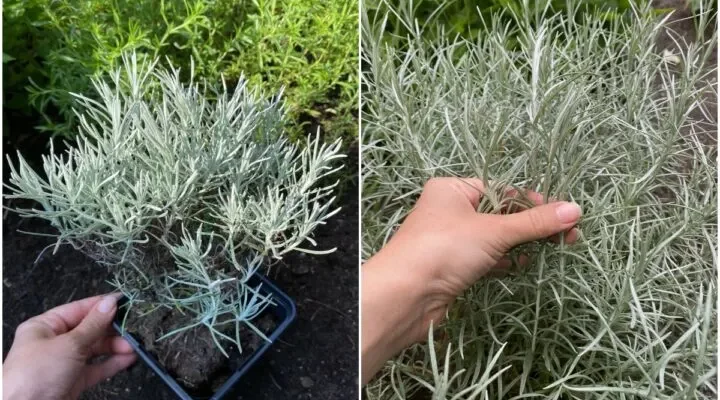Let me tell you how I decided to buy a curry plant. It wasn’t exactly planned. Just a classic case of “well, if the universe insists, who am I to stand in the way?”
You know when you notice a thing (like a new word, for example) and then you keep coming across it over and over again? That’s what happened to me and the plant that smells like curry.
First, I noticed the oddity that is the curry plant in the Asian corner of a botanical garden I was visiting.
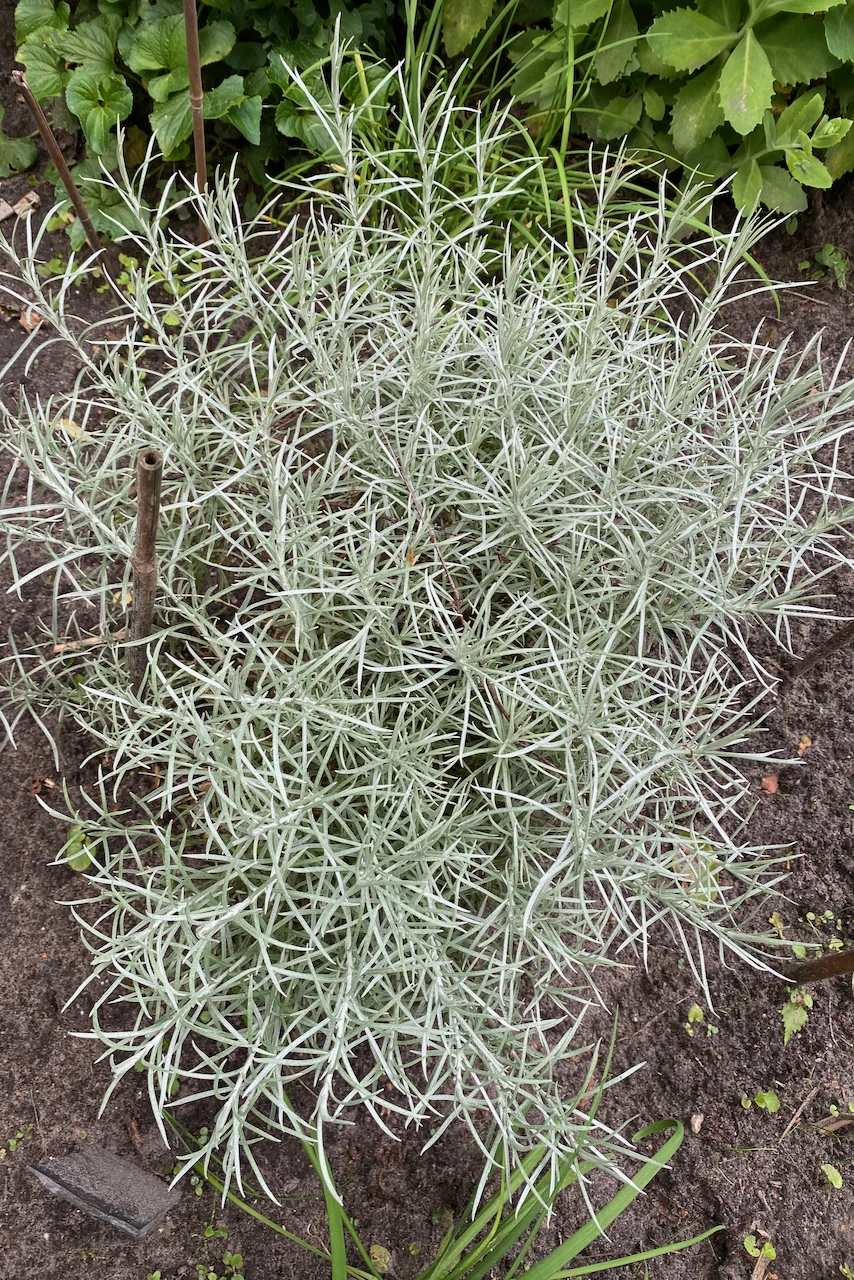
Ok, universe! If you keep winking my way, I’ll get myself one of these plants.
But what in the name of all that’s fragrant is a curry plant?
Curry plant – or curry herb – is the popular name for Helichrysum italicum. It is a tender perennial with needle-shaped silver leaves and yellow flowers. It looks quite similar to lavender and rosemary. And its moniker comes from the fact that the fresh leaves really do smell like the mix of spices used to make the delicious curry dish.
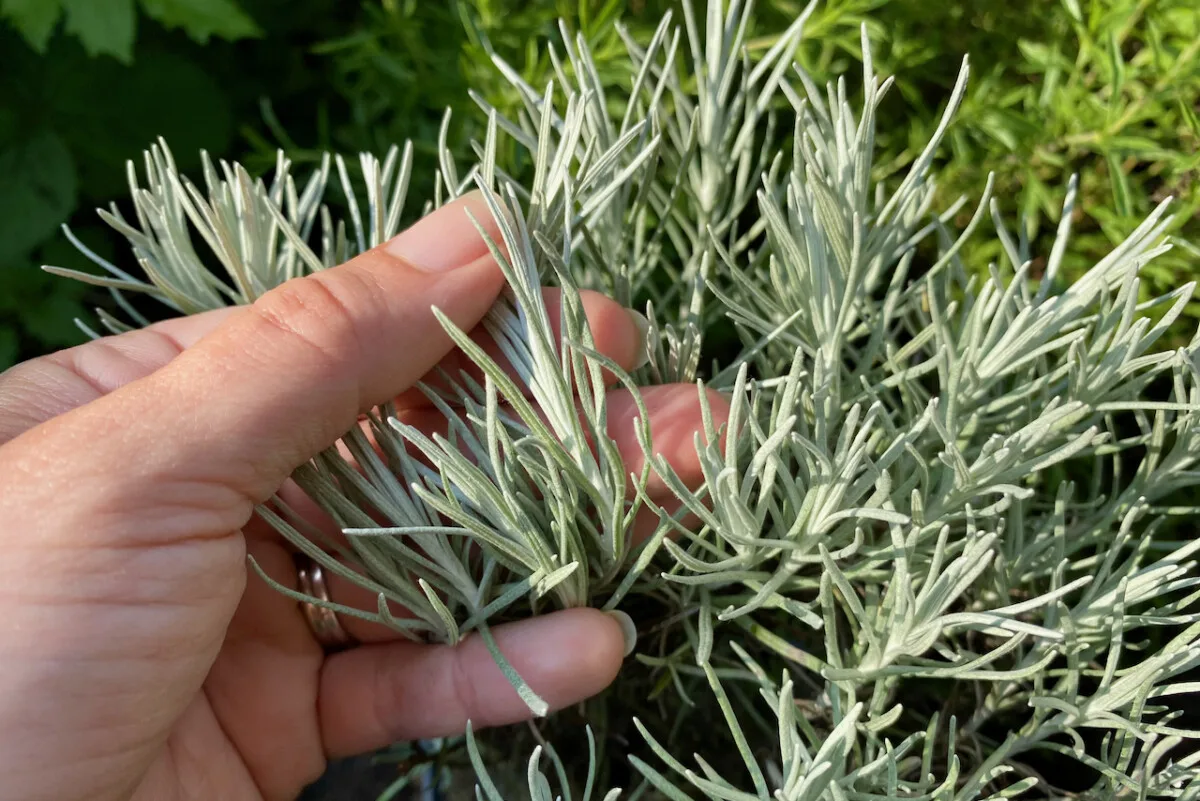
Another two names I found for Helichrysum italicum are Italian strawflower (a nod to its Mediterranean origins) and l’immortelle. A beautiful word that translates as everlasting or immortal (due to the skin rejuvenation properties of the essential oil extracted from the flowers.)
But let’s make things clear. The curry plant is not the same as the curry leaf tree (Murraya koenigii) whose leaves are used as flavoring in Indian and Asian cuisines.
If you were hoping to use this plant to whip up batch after spicy batch of curry, I’m sorry to disappoint you.

Why should I even plant the curry herb?
If all this talk of curry left you intrigued – and slightly hungry – consider this article your first sign from the universe that you should plant a curry herb. (And if you need more signs, come back and read it two more times.)
Here are a few reasons that convinced me to bring this plant into my garden.
1. The curry plant smells amazing.
Does the curry herb smell like curry? Yes, without a doubt. It has a pleasant curry fragrance. And I’m delighted to report it’s not just fragrant when you brush against the leaves. As soon as I brought this plant into the garden, I noticed that I get a nice whiff when the wind blows, especially after it rains.
I like the fragrance so much that I’ve bought several plants. I placed some at the back of the garden and a couple right along the deck. Just to give me more opportunities to brush gently past them and take in their scent.
I’ve written before about the important role that scent plays in a garden, so adding another scented plant to the mix was only natural. But unlike plants such as roses, jasmine and sweet peas, that are only fragrant when in bloom, herbs such as Helichrysum italicum will release their fragrance for much longer.

But what does the curry plant smell like, really?
Curry powder itself is a combination of cumin, turmeric, coriander, chili peppers and black pepper. Blends can vary from one region to another, even in the same country, so there are other variations that include fenugreek,
cardamom and even ginger.
So it’s no wonder that to some gardeners the curry plant may smell primarily like one of these ingredients. Other descriptions I’ve heard liken its fragrance to maple syrup or cinnamon.
Overall, to my nose, the curry herb has a pleasant combination of sweet, floral and spicy aromas. But then again, smell is very subjective; so if you’re in doubt or not very partial to a good curry, see if you can smell the curry plant first before you buy it (i.e. don’t buy it online).
If you like the smell of the plant, there is a downside: it might make you crave curry even when it’s not on the menu.
2. It’s fairly easy to keep the curry herb happy.
Would I categorize the curry herb as a low-maintenance plant?
Yes, as long as you meet its basic needs. What do we talk about when we talk about plant needs? The three key elements: soil, light, water.
Here’s how the curry plant fares in these three categories.
The curry plant does best in sandy or loamy soil.
Being originally from a fairly arid and sandy environment, all the members of the Helichrysum genus will do best in sandy or loamy soil.
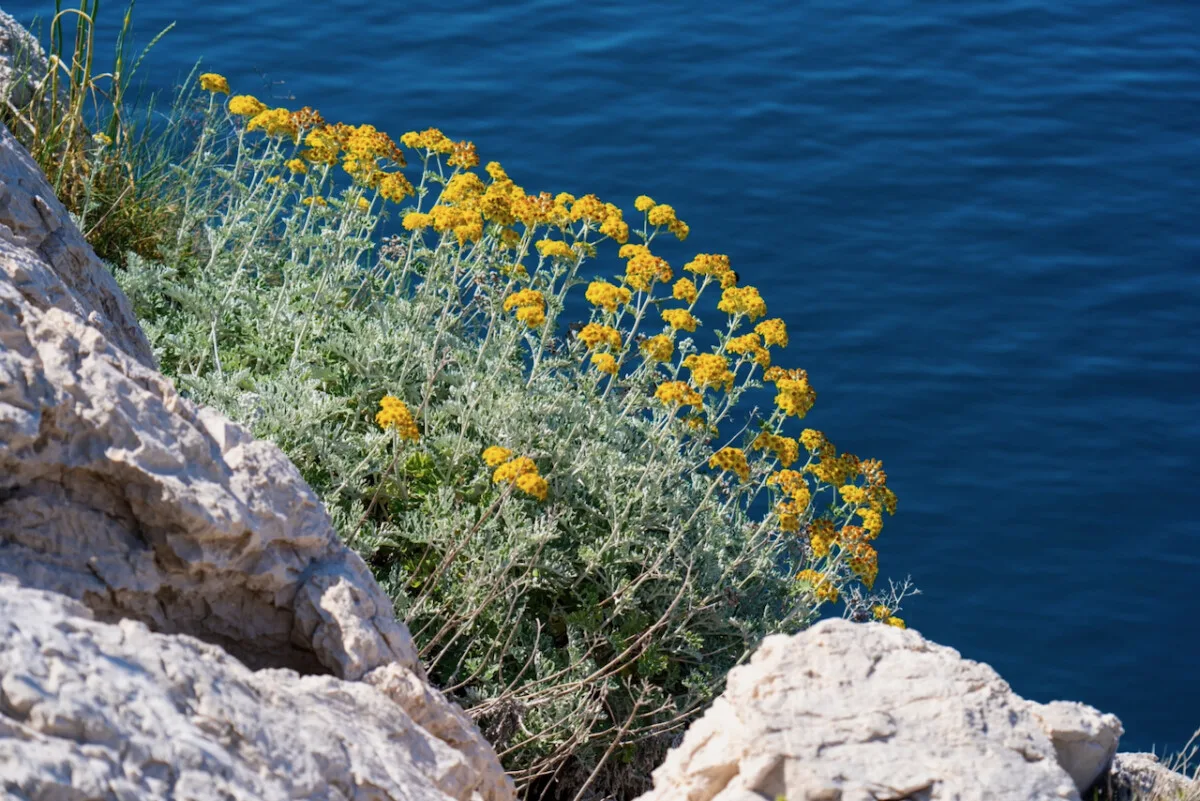
In the wild, plants in the Helichrysum genus can grow at a higher altitude of about 5500 feet (approximately 1700 meters) above sea level, in the crevices between rocks. So it’s a tough one.
The more sun the curry plant receives, the poorer your garden soil soil can be. With one caveat: the ground needs to drain well. Curry plants don’t like moisture collecting around the roots.
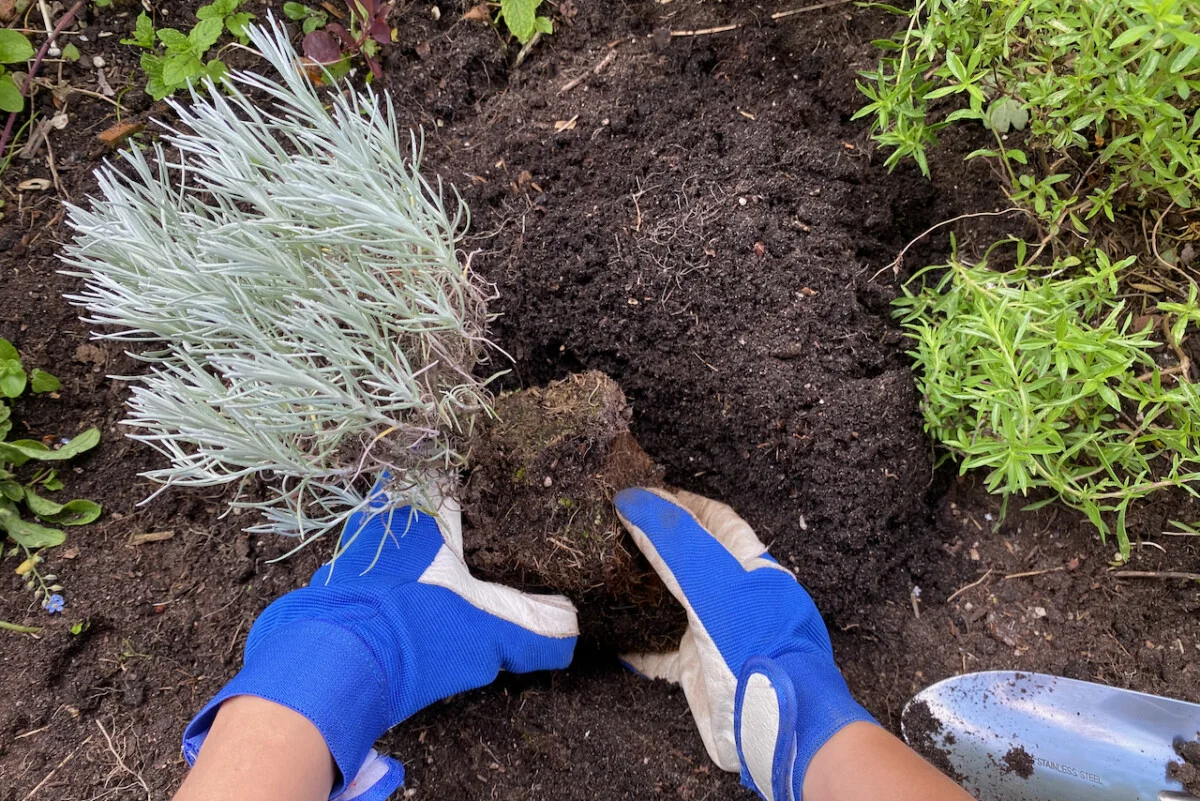
When it comes to light, the curry plant likes full sun, but it will do well in partial shade, too. There might be a difference in the speed of growth (faster in the sun) and the quantity of flowers it produces when it’s not in full sun.
The curry herb can withstand some wind and doesn’t require mulching.
3. The curry plant is a tough plant.
Just like lavender, the curry plant is a xerophyte – a plant that has adapted to a dry and hot environment. You can tell that by the tell-tale indicators that they have in common, such as the needle leather-like silver leaves and thick resinous stems.
These features are good for two reasons. First of all, it makes the curry plant drought-resistant, as long as you water it enough while it’s getting established.
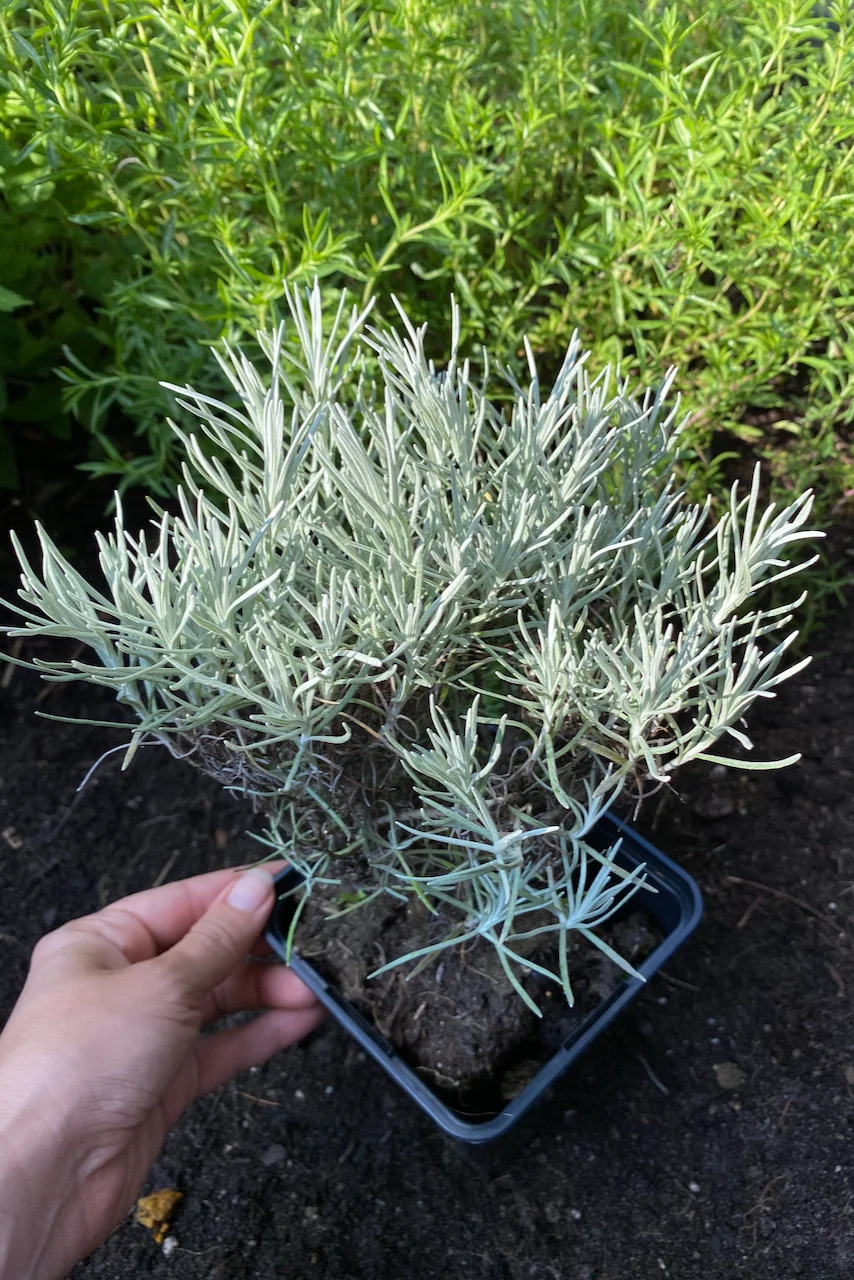
And secondly, bugs don’t really care for the fragrant tough leaves, so common garden pests leave it alone. Deer and rabbits also don’t like the smell of the plant, so they generally tend to steer clear of the spot where you’ve planted it.
However, the one thing that it’s not resistant to is prolonged hard frost. The curry plant can tolerate cold, but can’t tolerate hard frost.
